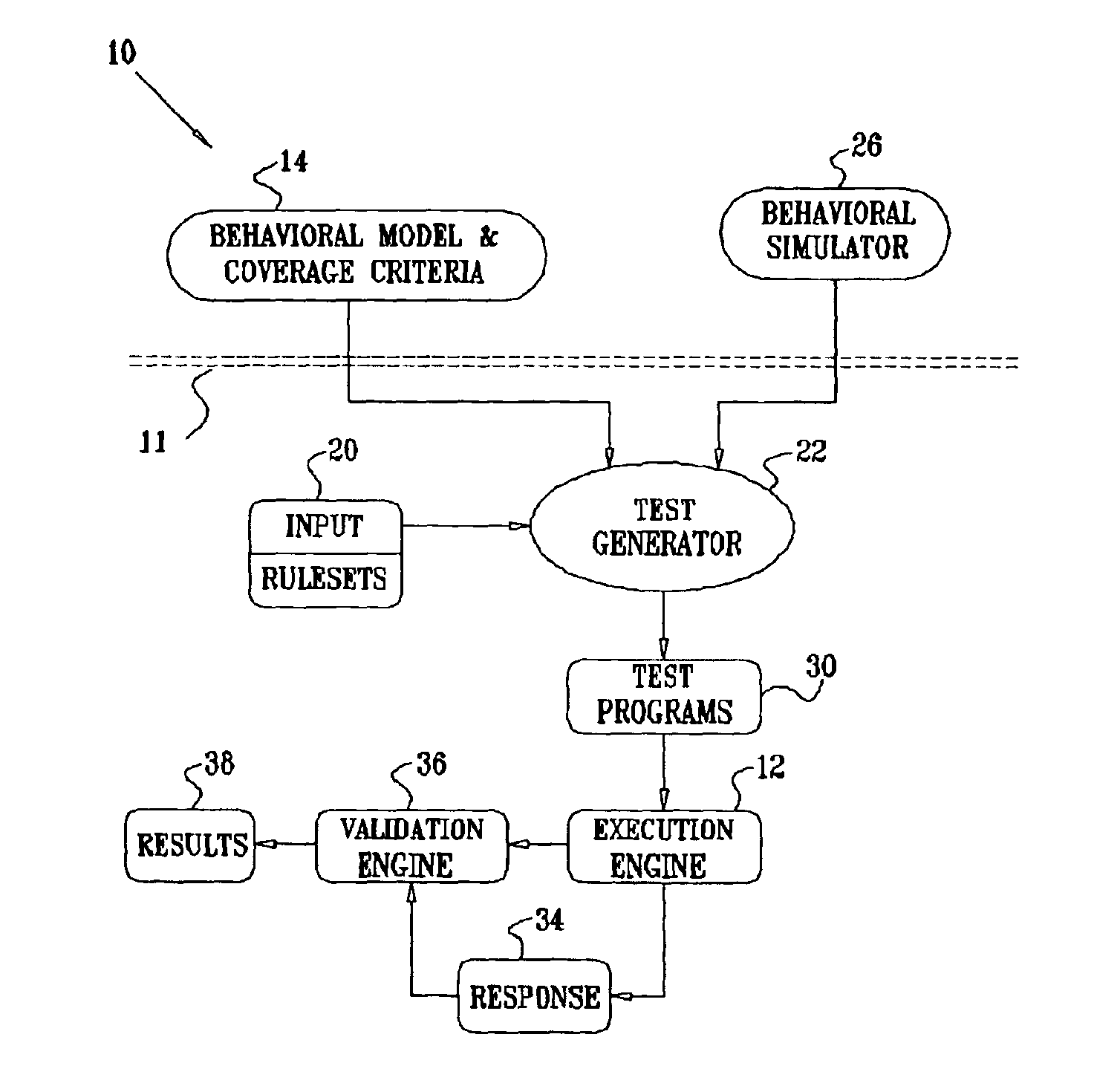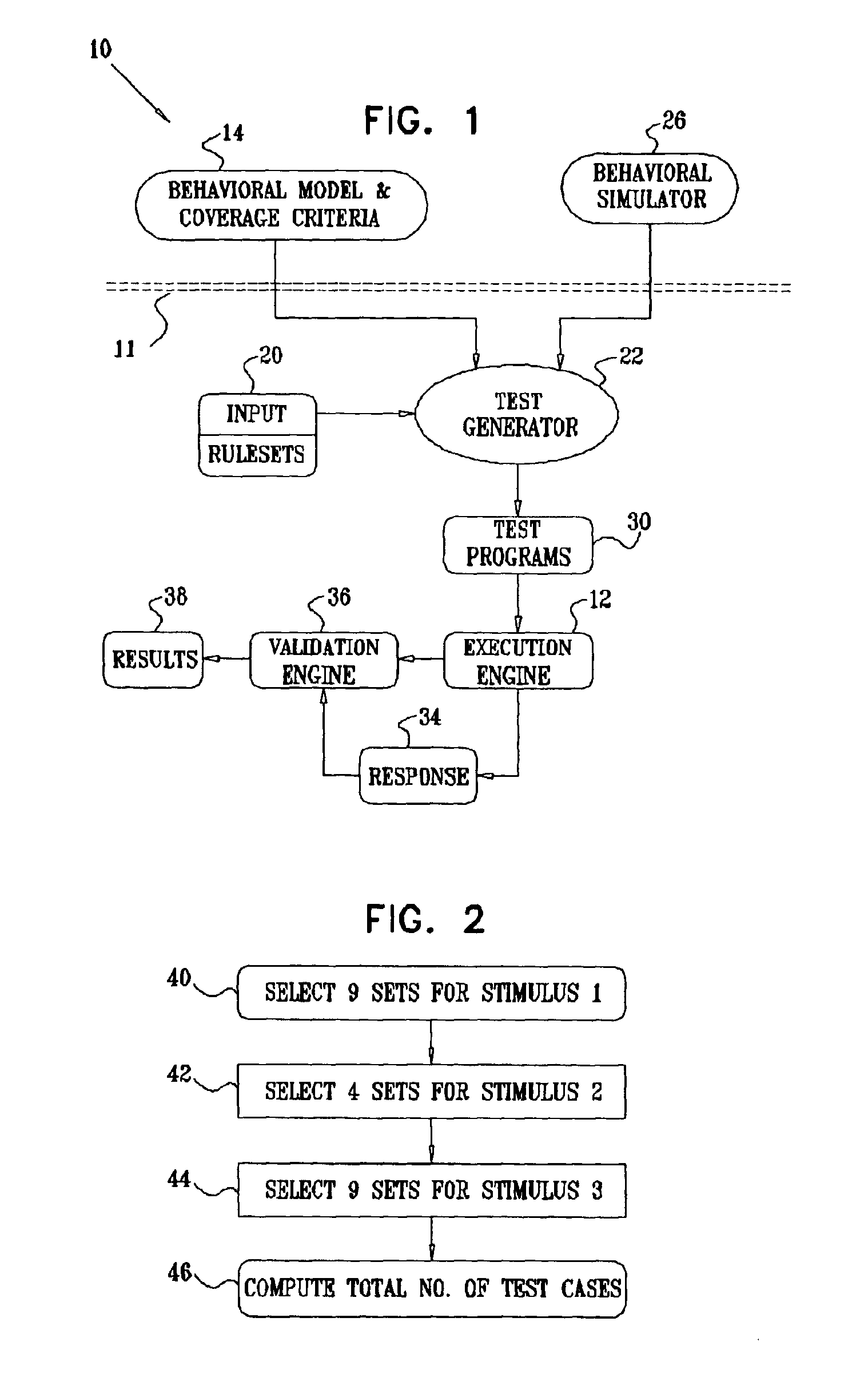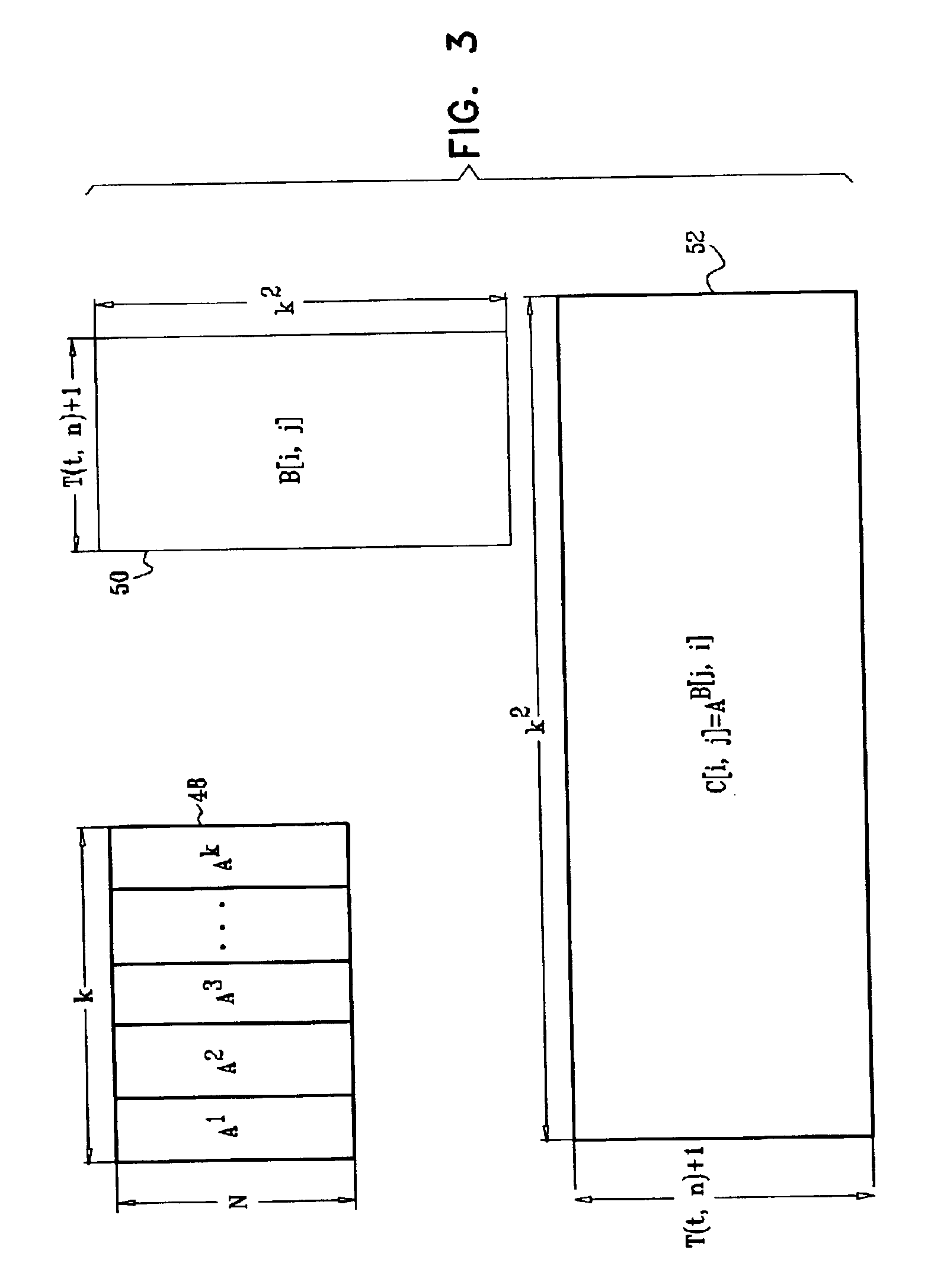Reducing the complexity of finite state machine test generation using combinatorial designs
a combinatorial design and finite state machine technology, applied in the field of software testing, can solve the problems of limited test execution resources, large number of tests required to exhaustively exercise a software program, and cost, and achieve the effect of ensuring test coverage and efficient generation
- Summary
- Abstract
- Description
- Claims
- Application Information
AI Technical Summary
Benefits of technology
Problems solved by technology
Method used
Image
Examples
example 1
[0060]In this example, the test programs 30 are generated for purpose of testing an interface having three commands, with which the execution engine 12 stimulates a system-under-test:
[0061]stimulus 1: InsertObject(parm1, parm2, parm3, parm4), where each of the four parameters can take values from the set {1,2,3};
[0062]stimulus 2: ModifyObject(parm5, parm6, parm7), where the parameters parm5, parm6, and parm7 are Boolean variables; and
[0063]stimulus 3: ExtendObject(parm8, parm9, parm10), where the parameters parm8 and parm9 are over the range {1,2,3} and the parameter parm10 is a Boolean variable.
[0064]There are 81 possible input sets to stimulus 1, eight possible input sets to stimulus 2, and 18 possible input sets to stimulus 3. Thus, at any given state of the test, there are 81+8+18=107 distinct stimuli. In this test situation, the number of possible test cases for the three stimuli, applied in any sequence, is 1073=1,225,043 test cases. The finite state machine thus realized in t...
example 2
[0190]The process disclosed with reference to FIG. 4 is shown for the case t=2.
[0191]The members of column 1 come from domain D1 of size 2, its members are {0,1}.
[0192]The members of column 2 come from domain D2 of size 3, its members are {x,y,z}.
[0193]The members of column 3 come from domain D3 of size 4, its members are {a,b,c,d}.
[0194]The members of column 4 come from domain D4 of size 2, its members are {T, F}.
[0195]Five test cases are given:
[0196]
TC1: 0 x a TTC2: 0 y b FTC3: 1 z c TTC4: 1 z d TTC5: 0 y c T
[0197]Now, to compute the next test case it will be noted that there are 6 D1,D2 pairs to be covered, of which 3 are already covered, namely the pairs 0x, 0y, and 1z. Thus, there are three uncovered pairs, namely the pairs 0z, 1x, 1z. To illustrate the situation, Table 5 is constructed as follows:
[0198]
TABLE 5ColumnPairs1&21&31&42&32&43&4Total6841268number ofpairs tobe coveredPairs0x0y0a0b0T0FxaybxTyFaTbFcovered so1z1c1d1TzczdzTyTcTdTfar by0cycTC1-TC5Pairs not0z1x0d1a1FXbxcxFz...
example 3
[0252]An add-on to the Murφ model checker which is disclosed in the document D. Dill, Murφ Description Language and Verifier, available on the Internet (sprout.stanford.edu / dill / murphi.html). The add-on uses covering suites rather than the Cartesian product of all possible inputs to describe the sets of possible stimuli to the unit under test. This reduces the number of arcs leaving any given state, and has been shown in practice to reduce the size of the state space considerably. The software is now no longer an exhaustive model checker—since it does not consider the complete range of possible behavior, but it remains useful as an under-approximation model of the software that can be used for test case generation. A test case in this context is a sequence of stimuli to be applied to the unit under test, or equivalently a directed path in the state machine model.
PUM
 Login to View More
Login to View More Abstract
Description
Claims
Application Information
 Login to View More
Login to View More - R&D
- Intellectual Property
- Life Sciences
- Materials
- Tech Scout
- Unparalleled Data Quality
- Higher Quality Content
- 60% Fewer Hallucinations
Browse by: Latest US Patents, China's latest patents, Technical Efficacy Thesaurus, Application Domain, Technology Topic, Popular Technical Reports.
© 2025 PatSnap. All rights reserved.Legal|Privacy policy|Modern Slavery Act Transparency Statement|Sitemap|About US| Contact US: help@patsnap.com



